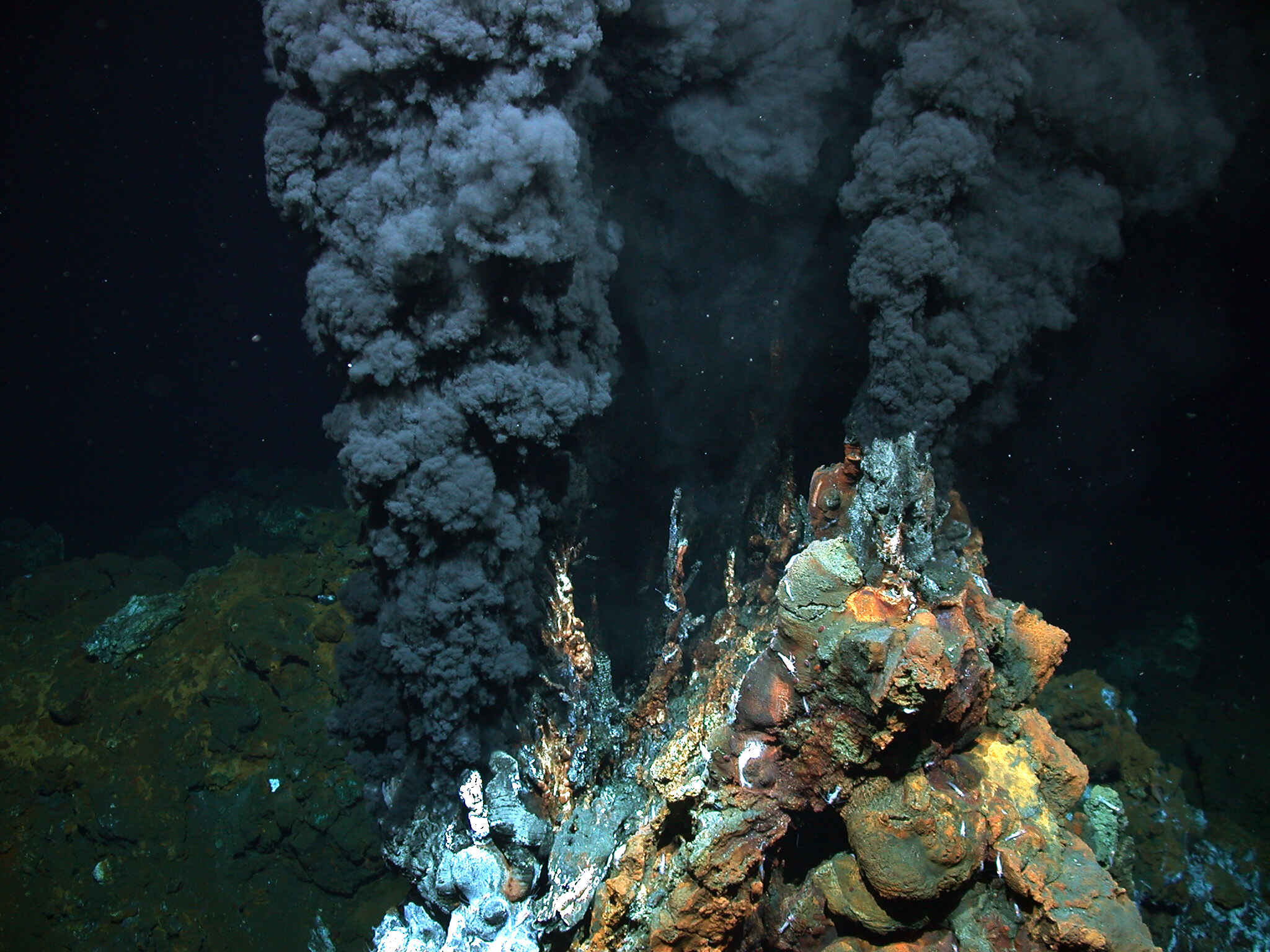
Hydrothermal vents are like underwater geysers, spewing hot, mineral-rich water from the ocean floor. Found in the darkest depths of the sea, these vents create unique ecosystems teeming with life. Did you know that some of the most bizarre and fascinating creatures on Earth thrive here? From giant tube worms to blind shrimp, these organisms have adapted to extreme conditions. But what exactly makes hydrothermal vents so special? In this post, we'll dive into 29 mind-blowing facts about these mysterious underwater phenomena. Get ready to be amazed by the wonders lurking beneath the waves!
What are Hydrothermal Vents?
Hydrothermal vents are fascinating geological formations found on the ocean floor. They are like underwater geysers, spewing hot, mineral-rich water from beneath the Earth's crust. Here are some intriguing facts about these unique underwater features.
-
Hydrothermal vents were first discovered in 1977 by scientists exploring the Galápagos Rift.
-
These vents form in areas where tectonic plates are moving apart, such as mid-ocean ridges.
-
The water expelled from hydrothermal vents can reach temperatures of up to 400°C (752°F).
-
Despite the extreme heat, the water does not boil due to the immense pressure at the ocean floor.
-
Hydrothermal vents are often surrounded by unique ecosystems teeming with life.
The Science Behind Hydrothermal Vents
Understanding the science behind hydrothermal vents helps us appreciate their complexity and importance. Here are some scientific facts about these underwater marvels.
-
The water expelled from hydrothermal vents originates from seawater that seeps into the Earth's crust.
-
As the water descends, it gets heated by magma and becomes rich in minerals.
-
When the heated water rises and exits the vent, it cools rapidly, causing minerals to precipitate and form chimney-like structures.
-
These chimneys can grow several meters tall and are often referred to as "black smokers" due to the dark color of the mineral deposits.
-
The minerals found in hydrothermal vent deposits include sulfides of iron, copper, and zinc.
Life Around Hydrothermal Vents
The ecosystems around hydrothermal vents are some of the most unique on Earth. Let's explore some facts about the life forms that thrive in these extreme environments.
-
Hydrothermal vent ecosystems are based on chemosynthesis, not photosynthesis.
-
Chemosynthetic bacteria convert the chemicals from the vent water into energy, forming the base of the food chain.
-
Giant tube worms, which can grow up to 2.4 meters (8 feet) long, are one of the most iconic species found near hydrothermal vents.
-
These tube worms have no digestive system; instead, they rely on symbiotic bacteria living inside them to produce food.
-
Other species found near hydrothermal vents include giant clams, shrimp, and crabs.
The Importance of Hydrothermal Vents
Hydrothermal vents play a crucial role in the ocean's ecosystem and have significant scientific importance. Here are some facts highlighting their importance.
-
Hydrothermal vents contribute to the ocean's chemical balance by releasing minerals and chemicals.
-
They provide a unique environment for studying extremophiles, organisms that thrive in extreme conditions.
-
Research on hydrothermal vent ecosystems has led to the discovery of new species and biological processes.
-
The study of chemosynthesis at hydrothermal vents has expanded our understanding of potential life on other planets.
-
Hydrothermal vents are also of interest for their potential mineral resources, including precious metals.
Threats to Hydrothermal Vents
Despite their remote locations, hydrothermal vents face several threats. Here are some facts about the challenges these unique ecosystems encounter.
-
Deep-sea mining poses a significant threat to hydrothermal vent ecosystems.
-
Climate change and ocean acidification can impact the delicate balance of these environments.
-
Pollution from human activities can reach even the most remote hydrothermal vents.
-
Overfishing in deep-sea areas can disrupt the food chain around hydrothermal vents.
-
Conservation efforts are underway to protect these unique ecosystems from human impact.
Fascinating Discoveries and Future Research
Hydrothermal vents continue to be a source of fascination and discovery. Here are some facts about recent discoveries and future research directions.
-
In 2015, scientists discovered a new type of hydrothermal vent called "white smokers," which emit lighter-colored minerals.
-
Autonomous underwater vehicles (AUVs) are being used to explore and map hydrothermal vent fields.
-
Researchers are studying the potential for hydrothermal vents to support life on icy moons like Europa and Enceladus.
-
Future missions aim to explore hydrothermal vents in previously uncharted areas of the ocean.
The Wonders of Hydrothermal Vents
Hydrothermal vents are fascinating. These underwater geysers spew superheated water rich in minerals, creating unique ecosystems. They host bizarre creatures like giant tube worms, blind shrimp, and yeti crabs. These organisms thrive in extreme conditions, relying on chemosynthesis instead of sunlight for energy.
Hydrothermal vents also play a role in Earth's geology. They help regulate ocean chemistry and contribute to the formation of mineral deposits. Scientists study these vents to understand early life on Earth and the potential for life on other planets.
Exploring hydrothermal vents expands our knowledge of marine biology, geology, and astrobiology. They remind us of the incredible diversity and adaptability of life. So next time you think about the ocean, remember the mysterious, vibrant world of hydrothermal vents lurking in the deep sea.
Was this page helpful?
Our commitment to delivering trustworthy and engaging content is at the heart of what we do. Each fact on our site is contributed by real users like you, bringing a wealth of diverse insights and information. To ensure the highest standards of accuracy and reliability, our dedicated editors meticulously review each submission. This process guarantees that the facts we share are not only fascinating but also credible. Trust in our commitment to quality and authenticity as you explore and learn with us.


